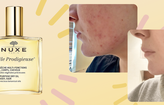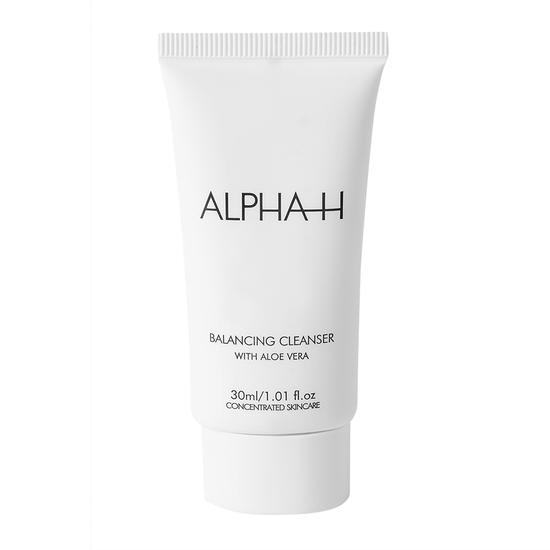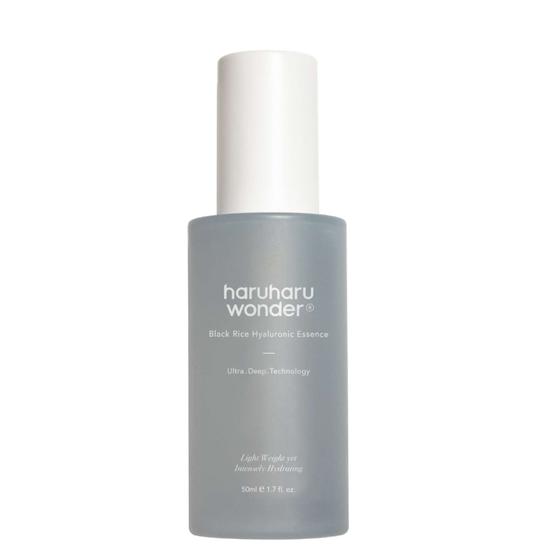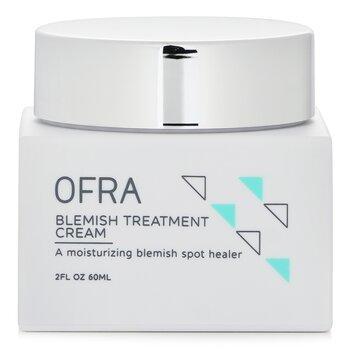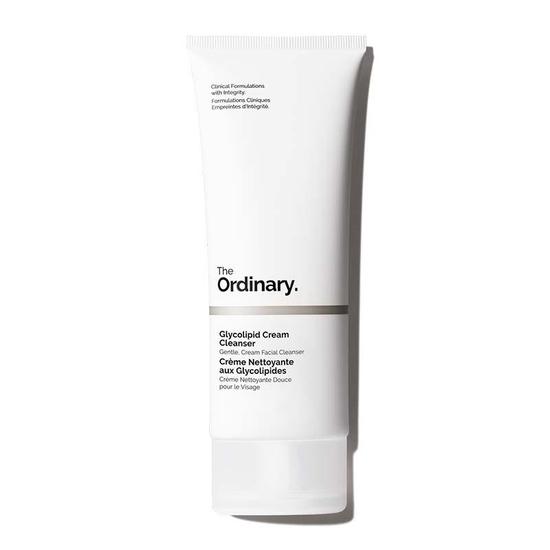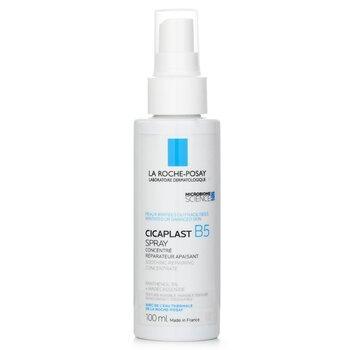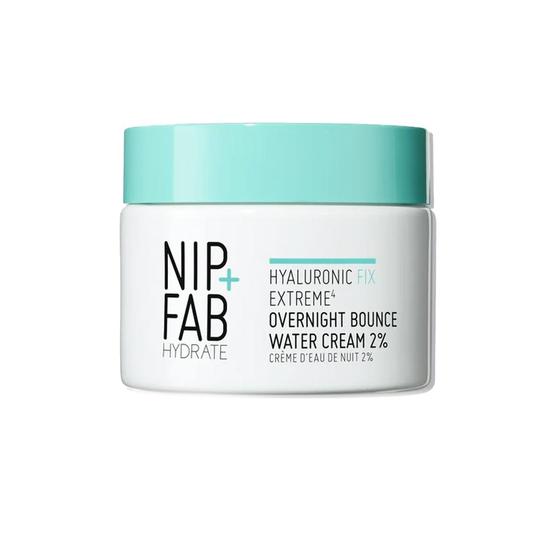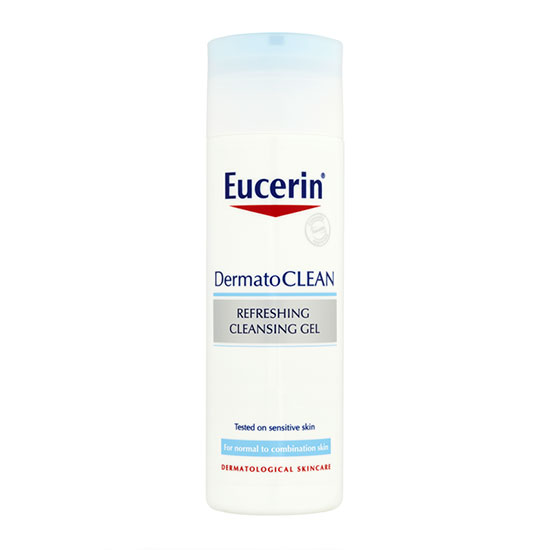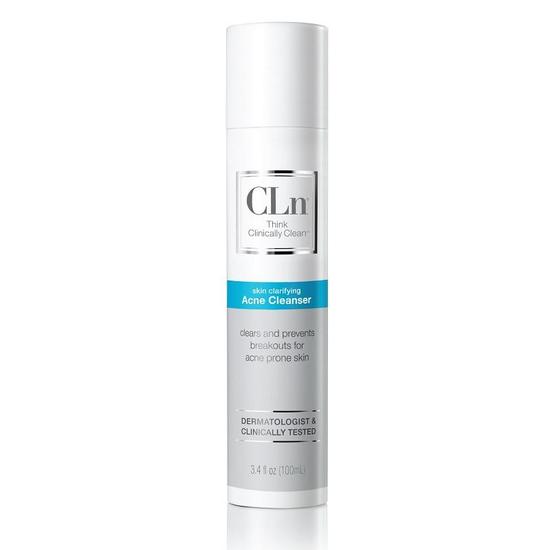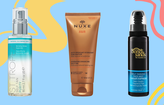
- Skin
- Acne + Skin Dryness
Can You Use Hyaluronic Acid With Benzoyl Peroxide?
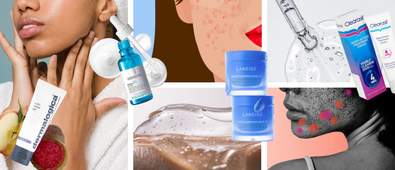
Flare-ups, breakouts, dryness and dehydration: these are some of the biggest banes of many a skincare routine.
Enter two skincare actives that have been a cornerstone of skincare routines around the world. Hyaluronic acid is a dermatalogical skincare favourite. There's a lot we could tell you about it, but we're sure you're likely to have heard a thing or two already, so we'll keep it short and sweet: it hydrates skin by attracting and retaining water. If you're looking for healthy, hydrated and plump skin, then you should get to know. Benzoyl peroxide, on the other hand, is an anti-bacterial, anti-inflammatory and antiseptic active that works to kill acne-causing bacteria. It's strong and so should be handled as such — with caution.
Consequently, we're here to answer a question that seeks to tackle these issues — two birds with one stone, so to speak: can you use hyaluronic acid with benzoyl peroxide?
👉 Already know the benefits of each ingredient?
Jump To Routine
Can You Use Hyaluronic Acid With Benzoyl Peroxide?
Yes. Hyaluronic acid is one of the best ingredients to pair with benzoyl peroxide.
Benzoyl peroxide is a go-to treatment for acne, but it’s also known for causing dryness, flaking, and irritation—especially in the first few weeks of use. That’s where hyaluronic acid comes in. This hydrating, skin-plumping ingredient helps counteract benzoyl peroxide’s drying effects without interfering with its acne-fighting action.
In fact, combining hyaluronic acid and benzoyl peroxide is a smart way to support your skin barrier and improve comfort—so you can continue using acne treatments consistently without compromising hydration.
Whether you’re using benzoyl peroxide in a cleanser, spot treatment, or leave-on gel, layering it with hyaluronic acid can make a difference in how your skin tolerates the routine.
Why This Duo Works So Well:
Since benzoyl peroxide can strip the skin of natural oils and moisture, layering hyaluronic acid underneath or after it helps reduce irritation, flaking, and barrier damage. It doesn’t dilute the acne-fighting effects of benzoyl peroxide and actually makes it easier to stick to your routine consistently.
Whether you're using benzoyl peroxide in the morning or at night, adding hyaluronic acid to your routine will help keep your skin balanced and comfortable.
- Balances dryness and treatment: HA replenishes hydration lost through BPO
- Enhances comfort: Makes strong acne routines more tolerable
- No interaction issues: They don’t cancel each other out
- Improves long-term results: Consistent use leads to clearer, healthier skin
- Supports barrier repair: Especially helpful if you’re experiencing peeling or redness
What Does Benzoyl Peroxide Do For The Skin?
Benzoyl peroxide (BPO) is an antibacterial and keratolytic ingredient used to treat acne. It works by releasing oxygen into the pores, killing acne-causing bacteria (Cutibacterium acnes), and helping to remove excess oil and dead skin cells.
It’s effective for both inflamed pimples and clogged pores but can be drying—especially when used in high concentrations or without proper barrier support.
Key Benefits Of Benzoyl Peroxide:
- Kills acne bacteria: Reduces breakouts at the source
- Clears pores: Helps prevent blackheads and whiteheads
- Controls oil: Minimises excess shine and sebum production
- Reduces inflammation: Calms red, swollen blemishes
- Fast-acting: Often improves acne within a few days
Best for:
- Oily or acne-prone skin
- Inflamed papules and pustules
- Mild to moderate breakouts
- Spot treatment for sudden flare-ups
Benzoyl peroxide is available in 2.5%, 5%, and 10% strengths and found in cleansers, gels, and creams.
What Does Hyaluronic Acid Do For The Skin?
Hyaluronic acid (HA) is a humectant that attracts and holds water in the skin, making it essential for maintaining hydration and a healthy barrier. It can hold up to 1000 times its weight in water, and it's suitable for virtually all skin types.
Unlike exfoliating or active ingredients, hyaluronic acid doesn’t treat acne directly—but it does help support the skin's tolerance to treatments like benzoyl peroxide.
Key Benefits Of Hyaluronic Acid:
- Hydrates and plumps skin: Reduces tightness, dryness, and flaking
- Supports the skin barrier: Helps repair moisture loss from acne treatments
- Improves elasticity and suppleness: Keeps skin looking healthy and smooth
- Soothes sensitivity: Calms irritation from stronger actives
- Layering-friendly: Works well with nearly every other skincare ingredient
Best For:
- Dehydrated or tight-feeling skin
- Barrier support during acne treatment
- All skin types, including oily and acne-prone
- AM and PM routines for long-lasting hydration
Hyaluronic acid is often found in serums, hydrating toners, sheet masks, and moisturisers.
Comparing Hyaluronic Acid and Benzoyl Peroxide Side-By-Side
| Effect | Benzoyl Peroxide | Hyaluronic Acid |
|---|---|---|
| Treats Acne | ✅ Yes | ❌ No |
| Kills Bacteria | ✅ Yes | ❌ No |
| Clears Clogged Pores | ✅ Yes | ❌ No |
| Hydrates Skin | ❌ No | ✅ Yes |
| Soothes Irritation | ⚠️ Can cause irritation | ✅ Yes |
| Supports Skin Barrier | ❌ No | ✅ Yes |
| Safe for Sensitive Skin | ⚠️ Use with caution | ✅ Yes |
| Best Time to Use | PM (or AM for cleansers) | AM and PM |
How To Use Hyaluronic Acid With Benzoyl Peroxide Together In Your Routine
Option 1: Apply Hyaluronic Acid Before Benzoyl Peroxide (Recommended For Gels Or Creams)
This cushions the skin and helps reduce irritation while allowing BPO to still work effectively.
Routine (AM or PM):
- Cleanse skin
- Apply hyaluronic acid serum to damp skin
- Wait 30 seconds to 1 minute
- Apply a benzoyl peroxide product
- Follow with moisturiser
Option 2: Use Benzoyl Peroxide First, Followed By Hyaluronic Acid (For Experienced Users, Or Those With Less Sensitive Skin)
If you’re already well-adjusted to benzoyl peroxide and want maximum effectiveness:
- Cleanse and pat skin dry
- Apply benzoyl peroxide to clean, dry skin
- Wait 5–10 minutes to let it absorb
- Follow with hyaluronic acid and a moisturiser
This lets benzoyl peroxide penetrate more directly while still rehydrating the skin afterwards.
Option 3: Use HA In Your Moisturiser
Many moisturisers now contain hyaluronic acid, so you can simplify your routine by:
- Using a HA-infused moisturiser after benzoyl peroxide
- Or mixing a drop of HA serum into your moisturiser for extra hydration
This ensures you still get the hydrating benefits without adding an extra step.
FAQs
Can I layer hyaluronic acid and benzoyl peroxide?
In short, yes—hyaluronic acid can be layered before or after benzoyl peroxide, depending on your preference and skin’s needs.
Should I apply hyaluronic acid before or after BPO?
Both options work. For sensitive skin, apply HA first. For maximum potency, apply BPO first and follow with HA.
Will hyaluronic acid reduce the effectiveness of benzoyl peroxide?
No—it doesn’t interfere. In fact, it helps reduce irritation, allowing you to use BPO more consistently.
Is this combination good for oily or acne-prone skin?
Yes! HA is lightweight and non-comedogenic, making it ideal for balancing oil control with hydration during acne treatment.
If you’re interested in learning more, make sure to check out our other skincare guides. Discover a more detailed breakdown of benzoyl peroxide use in our blog Adult Acne: Why You Get It and How to Tackle it, explore the best times to apply hydrators in When to Use Hyaluronic Acid Serum & Products, and master layering with How to Use Hyaluronic Acid in Your Routine.

Written by Maria Mukaranda
Maria’s background is rooted primarily in creative media and a love for all things written, expressed through experience both online and in print; for creative platforms spanning from music to fashion to beauty.
Top Posts

